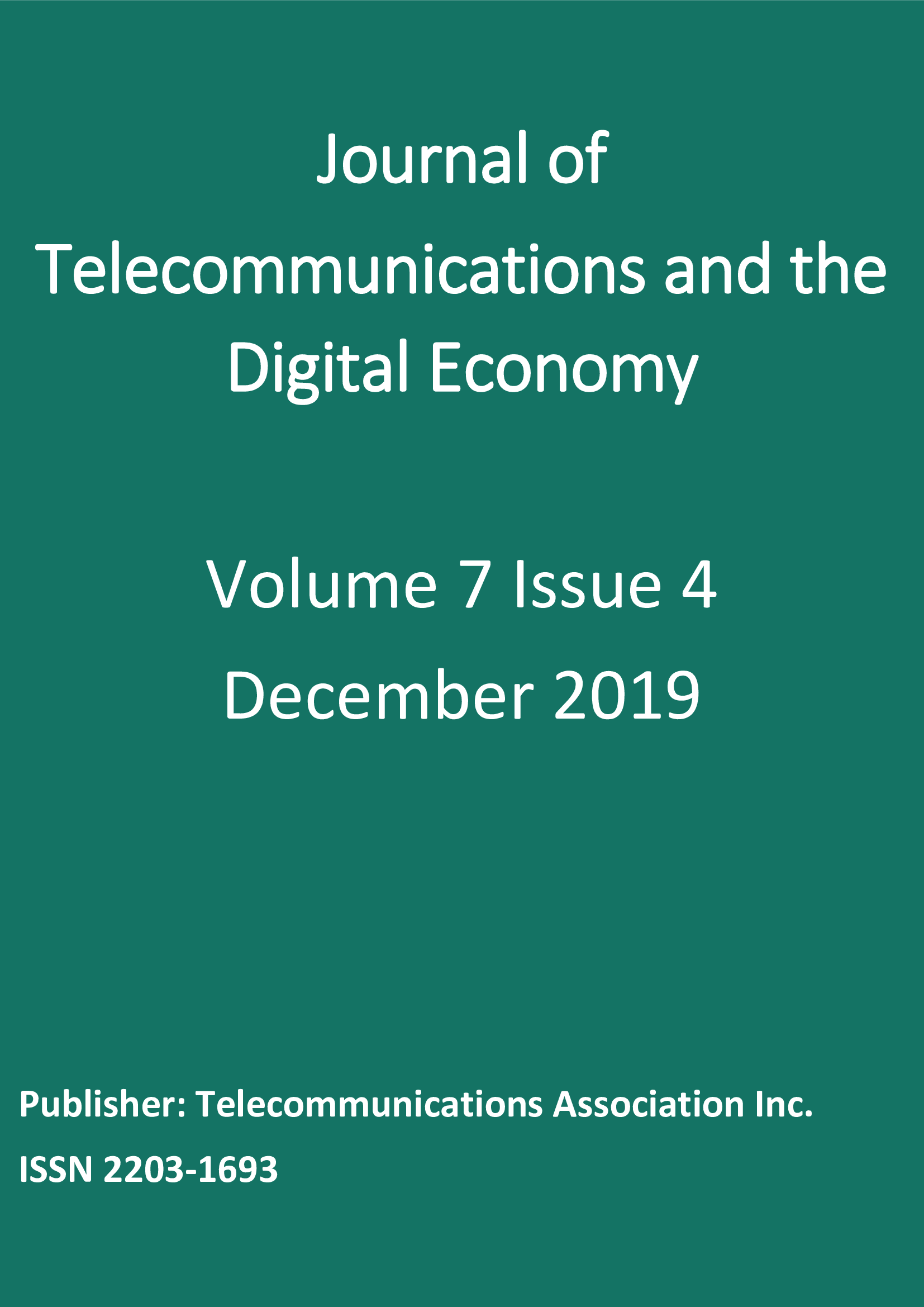'This is VJY, Over' The Contribution of High Frequency Radio to the Social and Economic Development of the Northern Territory
Main Article Content
Keywords
high frequency radio, social capital, Northern Territory, isolation, wellbeing
Abstract
This paper examines the relationship between the use of High Frequency (HF) radio and the development of social capital in the Northern Territory (NT) of Australia. Social capital is an elusive concept. It has its origin in a number of disciplines and, as a consequence, it is a mix of disparate and intangible concepts such as trust, reciprocity, norms and cooperation. It has been argued that there is a strong positive correlation between the acquisition of social capital and social and economic wellbeing. In order to determine if the use of HF radio promoted the development of social capital, qualitative data was collected from 32 NT self-identified HF radio users. Although manned operations of the Darwin-based HF coastal radio service ceased on 30 June 2002, the evidence indicates that HF radio was instrumental in the development of a sense of community amongst its widely dispersed and isolated users. The social capital outcomes of HF radio use that included social and economic well-being, engagement in participatory democracy and the acquisition of human capital were precipitated by the shared community concept of trust, informal and formal networks and cross-cutting ties.
References
ABS. (2004). Information Paper Measuring Social Capital An Australian Framework and Indicators. Retrieved from https://www.ausstats.abs.gov.au/Ausstats/free.nsf/Lookup/13C0688F6B98DD45CA256E360077D526/$File/13780_2004.pdf
ABS. (2017). Australian Demographic Statistics, Sept 2017. Retrieved from http://www.abs.gov.au/ausstats/abs@.nsf/mf/3101.0
Bandias, S. (2008). The role of Telecommunications in the Sustainable Sustainable Development of Rural and remote communities in the NT. (Doctor of Philosophy), Charles Darwin University, Darwin.
Bandias, S., & Mason, E. (2017). Life in Radioland - Stories from the bush before the mobile phone. Darwin: Historical Society of the Northern Territory.
Bandias, S., & Vemuri, S. R. (2005). Telecommunications infrastructure facilitating sustainable development of rural and remote communities in Northern Australia. Telecommunications Policy, 29(2), 237-249.
Carmichael, T., & Cunningham, N. (2017). Theoretical Data Collection and Data Analysis with Gerunds in a Constructivist Grounded Theory Study. Electronic Journal of Business Research Methods, 15(2), 59-73.
Coleman, J. S. (1988). Social Capital in the Creation of Human Capital. American Journal of Sociology, 94(s1), S95.
Geoscience Australia. (2018). Areas of Australia - States and territories Retrieved from http://www.ga.gov.au/scientific-topics/national-location-information/dimensions/area-of-australia-states-and-territories
Grootaert, C. (1998). Social Capital: The missing link. Retrieved from http://www.worldbank.org/poverty/scapital/wkrppr/sciwp3.pdf
Harte, B. (2002). When radio was the cat's whiskers. Dural, N.S.W: Rosenberg.
Hewitson, P. (2012). Australian MSC. Retrieved from http://coastradio.info/vid.html
IMG [Implementation and Management Group]. (1980). A Study of Remote Area Telecommunications in the Northern Territory. Sydney: The Group.
Legislative Assembly of the Northern Territory. (1985). Report of the Select Committee On Communications Technology. Retrieved from https://trove.nla.gov.au/version/46639633
Livingston, K. (1996). The Wired Nation Continent. Melbourne: Oxford University Press.
Loonam, J. (2014). Towards a Grounded Theory Methodology: Reflections for Management Scholars. Irish Journal of Management, 33(1), 49-72.
Martin, V. (2018). Grounded Theory: Popular, Useful, and Misunderstood. Journalism & Mass Communication Quarterly, 95(1), 12-14. doi:10.1177/1077699018759676
McKay, F. (1995). Traeger the Pedal Radio Man. Moorooka Qld: Boolarong Press.
Moyle, A. (1984). Clear Across Australia - A History of Telecommunications. Melbourne: Thomas Nelson.
Northern Territory Police Historical Association. (2000). NT Police Museum. Retrieved from https://sites.google.com/site/ntpmhsociety/home/our-rich-history/equipment-1/communications
OECD. (2002). Social Capital: The Challenge of International Measurement Retrieved from London: http://www.oecd.org/innovation/research/2380584.pdf
Stone, W. (2001). Measuring Social Capital: Towards a theoretically informed measurement framework for researching social capital in family and communtiy life. Melbourne: Australian Institute of Family Services.
Woolcock, M. (2000). Social capital and its meanings. Canberra Bulletin of Public Administration, 98, 17-19.





